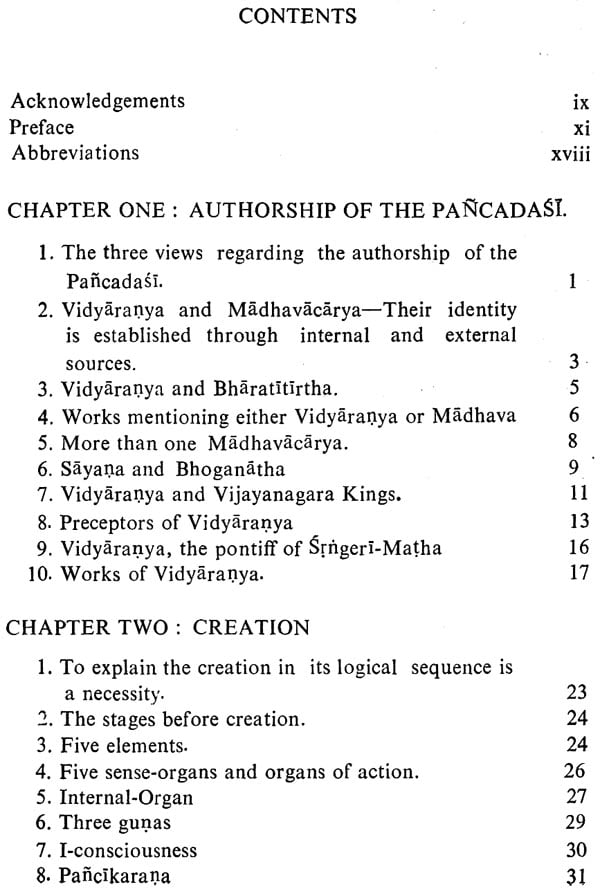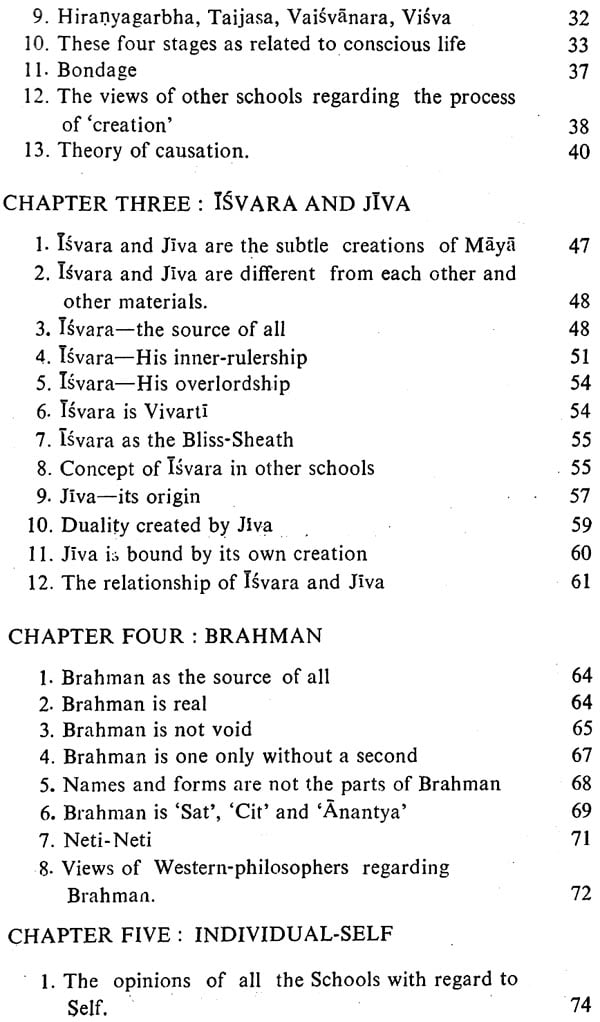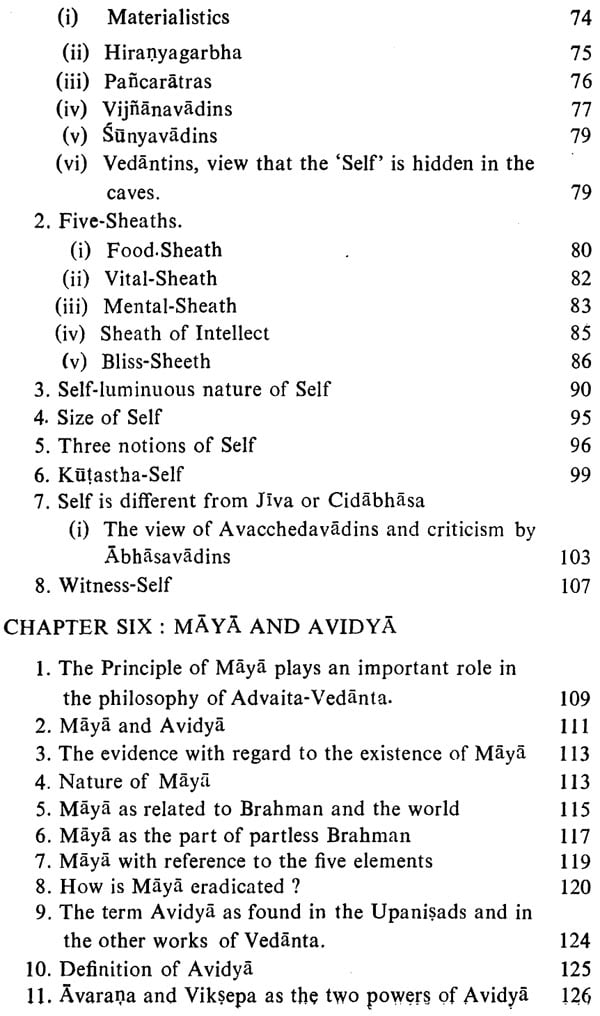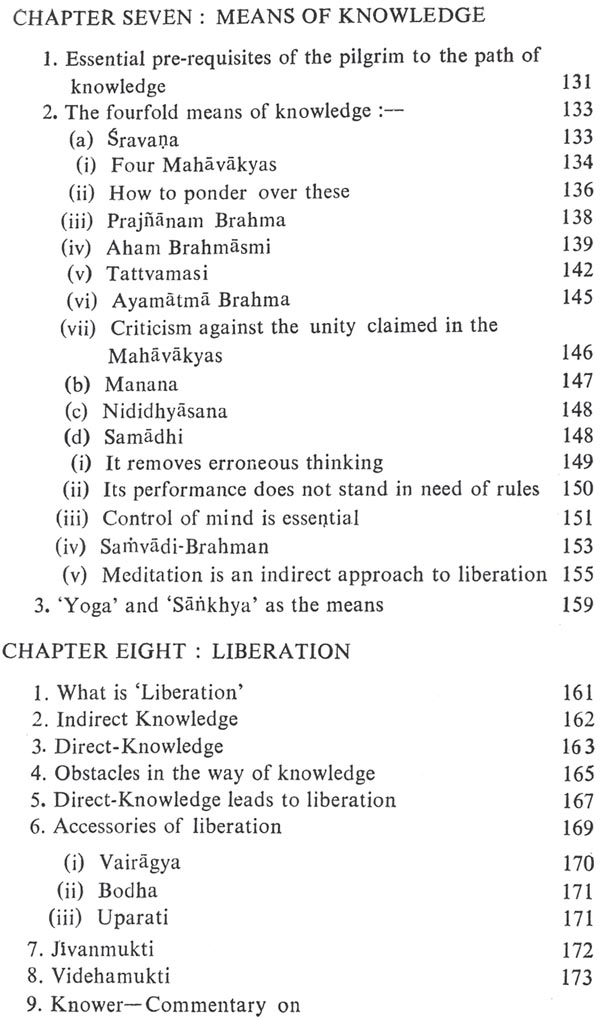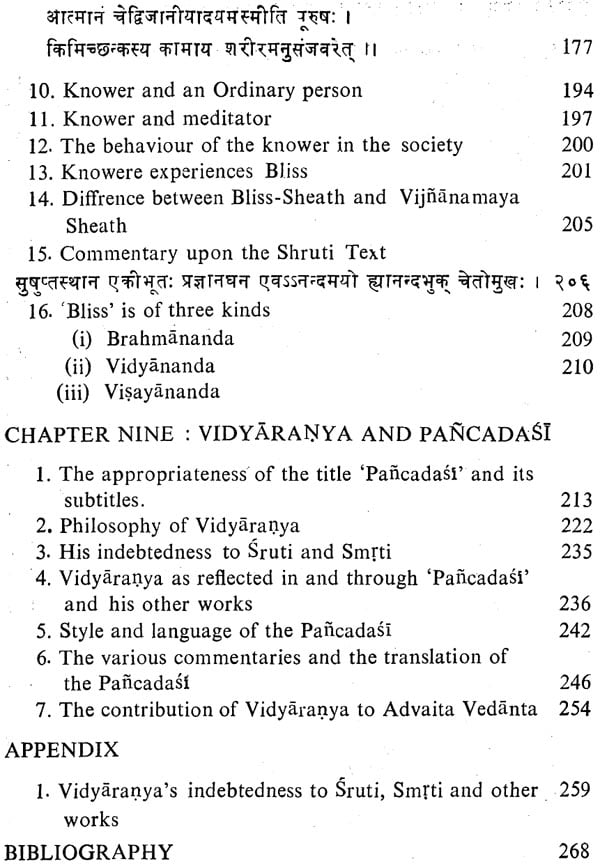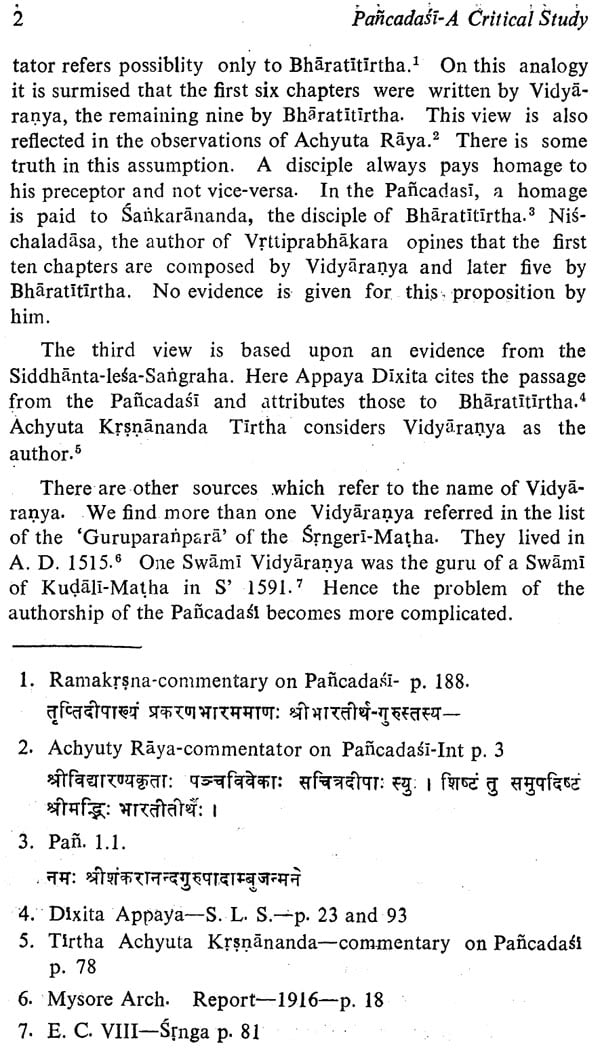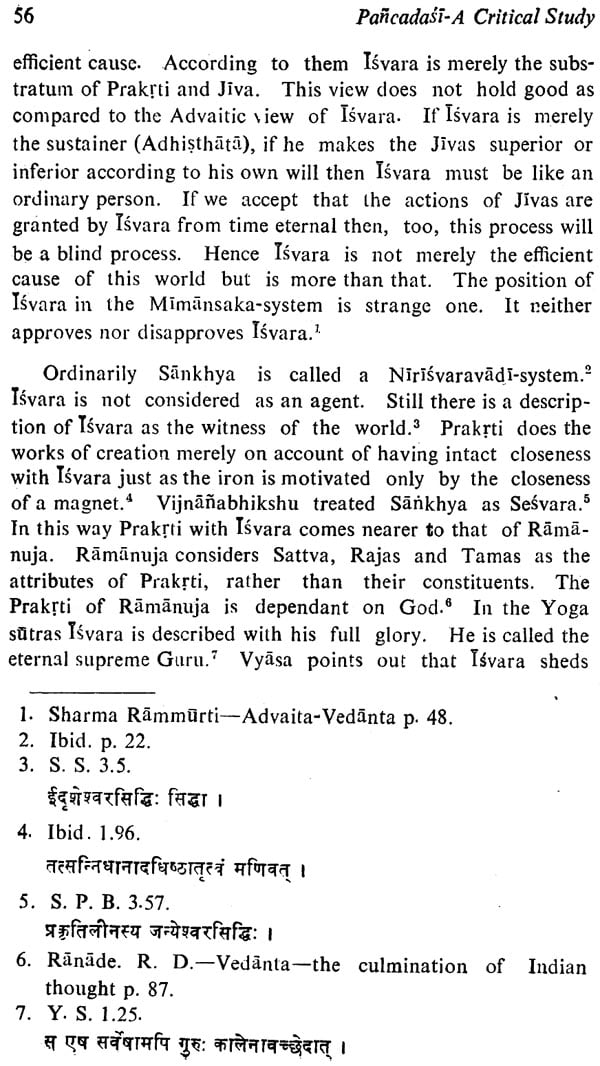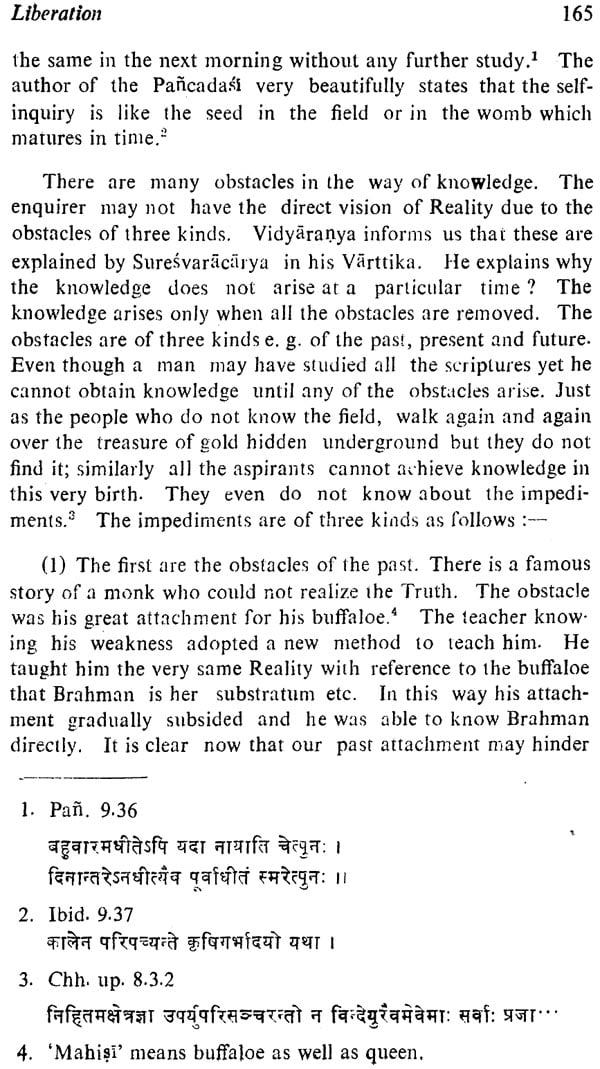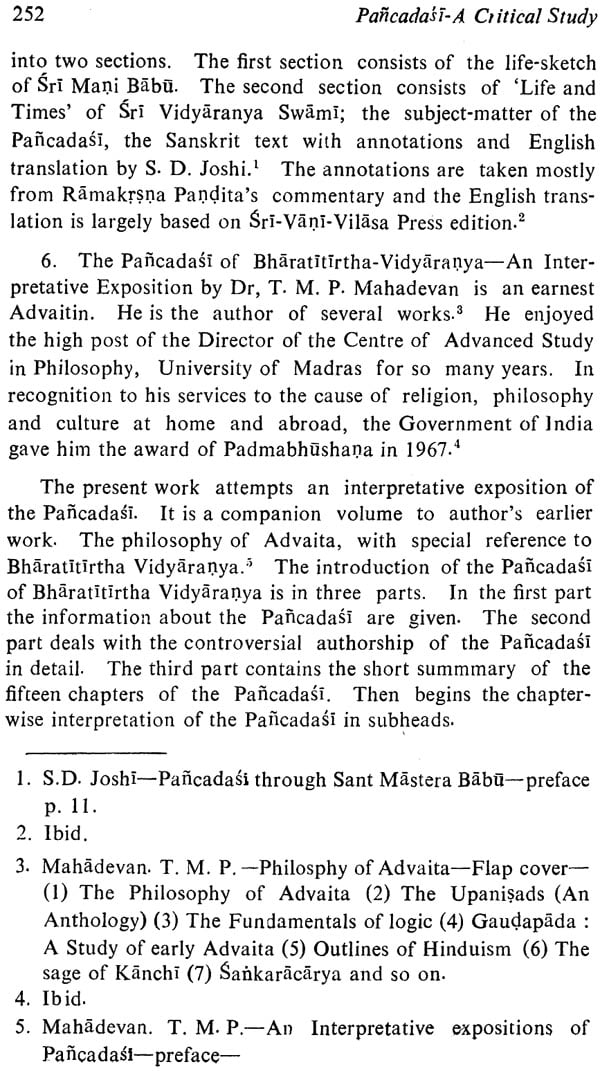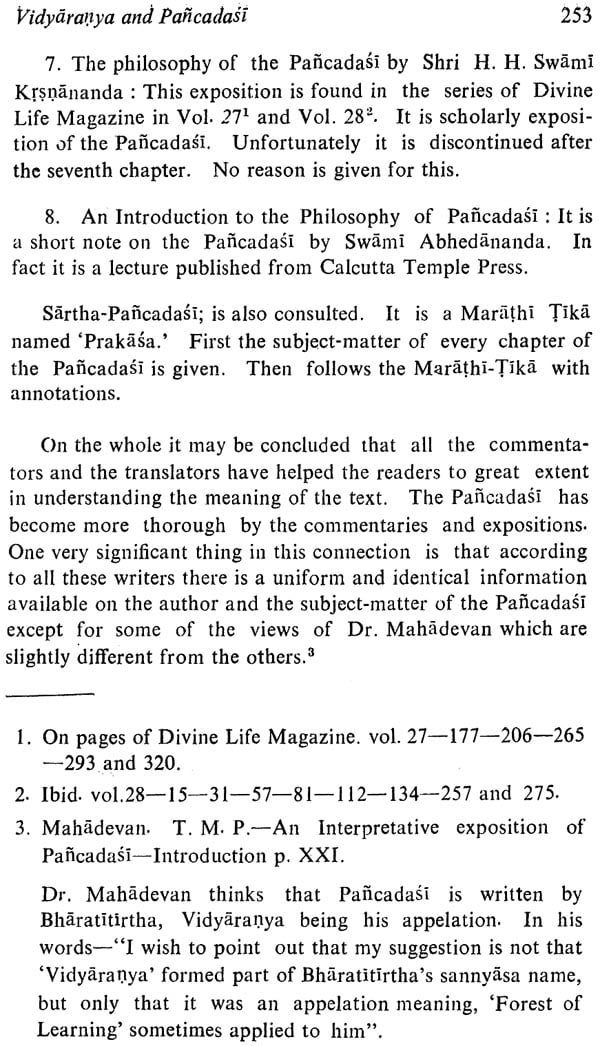
Pancadasi (A Critical Study)
Book Specification
| Item Code: | NAV381 |
| Author: | Shakuntala Punjani |
| Publisher: | Parimal Publication Pvt. Ltd. |
| Language: | English |
| Edition: | 2020 |
| ISBN: | 9788171106622 |
| Pages: | 288 |
| Cover: | HARDCOVER |
| Other Details | 9.00 X 6.00 inch |
| Weight | 480 gm |
Book Description
The Pancadasi of Sri Vidyaranya is a classic of great celebrity. It occupies a popuar and prominent place in the tradition of Advaita Vedanta, due ot it’s clear concepts, dialectical method, lucid and humorous style.
The authorship of Pancadasi; the concept of Creation; Isvara and Jiva; Brahman as existence; Consciousness and Infinity; Individual Self; Maya and Avidya; Knowledge; Liberation; Vidyaranya and Pancadasi; various commentators and commentaries of Pancadasi and the contribution of Vidyaranya to Advaita Vedanta form the body of the present work. Vidyaranya’s deep philosophical insight leaves the mark on the reader through the description of Maya and Avidya, witness Consciousness, Abhasa-Vada. The topics like Samvadi Brahman, threefold Prarabdha, twofold duality created by Isvara and Jiva, three types of Bliss, the seven stages in the way of knowledge are certain stamps of originality of Vidyaranya.
In the traditional history of Advaita Vedanta, it is a known fact that Mandana Misra was the original name of Suresvaracarya before his entering into the order of Sannyasa. Let us recall that Mandana Misra was the disciple of Kumarila Bhatt, the Mimansaka. Accordingly the, traditional scholars opined that all the writings of Mandana Misra were the writings of Suresvara. Among the modern indologists, it was J. A. Jacob who, first of all, declared the identity between Mandana Misra and SureSvaracarya in his introduction to the Naiskarmya siddhi of SureSvara. Jacob’s opinion was based on the legendary evidence given by Vidyadranya in the Sankara-digvijaya. The recent researches, however, do not support this theory of identity. Mahamahopadhyaya Prof. Kuppu Swami Shastri was the first scholar who challenged the identity between Mandana Misra and SureSvara, in his learned introduction to - the Brahma Siddhi of Mandana Misra, an editor of great merit with commentary of Sankhapani, Madras, 1937. As a matter of fact the ideas, arguments and doctrines of Mandana Misra, as available in the Brahma-Siddhi are not in accordance with those available in the works of Suresvaracarya. It is true that both these authors are the followers of Advaitavada, but there is lot of difference in the concept of Advaita in the works of these. Mandana Misra propounded Bhavadvaitavada in the Siddhi-khanda of Brahma-siddhi while Suresvaracarya refuted Bhavadvaita-vada ‘in the Brhadéranyaka-Bhasya- Vartika ‘nabhavarhstho’ ‘nyatrapi nisedhah kimutdasraye’ Not only that much contrary views have been expressed by both of them on ‘prapancdbhava’ and ‘avidyadhvarhsa’, Madhu- sudana Saraswati has clearly pointed out in the Advaita-siddh and the Veddnta-kalpa-latika, the difference of opinion of Mandana Miéra and Suresvara on the above mentioned concepts. There are several other arguments and textual internal evidences which prove that Mandana Misra and Suresvara were two different persons.
We all know that Suresvaracarya was a very devoted disciple-follower of Sahkaracarya and he strongly supported the doctrines of SankarAcarya in all his writings. On the other hand Mandana Misra has frequently expressed difference of opinion against the views of SankarAcarya. In the history of Advaita Vedanta, we find two main streams arising from the interpretation of Sankaracdrya’s writings. Vacaspati Misra, the author of the famous Bhamati-commentary was greatly influenced by the distinctive teachings of Mandana Misra and frequently supported Mandana Misra’s point of views on a number of important Vedantic issues in the Bhamati. As a result, a new school of thought developed in the history of Advaita-Vedanta. This school followed the interpretation of Bhamati and is known as ‘Bhamati-Prasthana’. The second school of thought is known as’ ‘Vivarana-Prasthana’. It was Prakdsatma-yati, the author of the Paficapadika-viva- rana, a commentery on ‘Pancapddika’ of Padmapadacarya, who was greatly influenced by the works of Padmapadacarya and Suresvaradcarya and who gave rise to the second stream of thought, known as ‘Vivarana-Prasthana’. The name Padmapadika was given to the commentary probably because this commentary of the Saririka-Bhasya was divided into five chapters, namely (1) Padaccheda (2) Padarthokti.(3) Vigraha (4) Vakya-yojana. (5) Aksepa-samadhana. By and by the Pancapadika-vivarana became the basic text of Vivarna- prasthana and the following five valuable commentaries were written in the Pancapadika-vivarana.
(1) The Rju-vivarana of Visnu-Bhattopadhyaya.
(2) The Vivarana-tatparya-dipikad of Citsukhacarya.
(3) The Vivarana-bhava-prakasika of Nrsimhasramacarya.
(4) The Tattva-dipana of Akhanddnanda.
(5) The Vivarana-prameya-Sangraha of Vidyaranya.
Vidyaranya, the author of the Pancadasi, obviously belonged to the Vivarana-Prasthana stream of Advaita Vedanta. This is evident from his well known work—‘The Vivarana-Prameya- Samgraha’ which is the most valuable work for understanding the Prameya-paksa of the Vivarana-Prasthadna. Vidyaranya was a prolific writer. He has several valuable works to his credit. Although scholars have questioned the authorship of Vidyaranya regarding some of his works, but there is unanimity of opinion on Vidyaranya’s authorship of the Pancadasi and the Vivarana-Prameya-Samgraha. Vidyaranya was the name assigned to Madhavacarya after he had entered into the order of Sannyasa. He was the disciple of Sankarananda. In the medieval Sanskrit literature of Advaita-Vedanta Vidyaranya occupied a very significant place. He was the pontiff of Srngeri Matha and was the founder of the Vijayanagara kingdom. He remained as a minister and councillor of the three distinguished kings of Vijayanagaram. That is why he was known as ‘Karnataka-Sithhasana: sthapanacarya’. Vidyarahya attached utmost importance to the Verbal Testimony and based his interpretation of the basic concepts of Advaita Vedanta on the support of the evidence of Sruti and Smrti.
Pancadasi is a great manual of Advaita-Vedanta. It holds a unique place among the post-Sankara-Vedantic-works. It is an expository treatise—an Upadesa-Sastra solely intended to Instruct the pilgrim of the spiritual path. Vidyaranya, the author of the work himself declares at the very outset—
He has also employed argumentation and dialectics for the understanding of the student.
Pancadasi—the book of fifteen chapters known as ‘Prakaranas’ are divided into three quintads—-Viveka-Pancaka; Dipa-Pancaka and Ananda-Pancaka. It is believed that these quintads signify the three aspects of Reality namely Sat, Cit and Ananda respectively. The subject matter indicates that this scheme is not strictly followed. The essential doctrines of Vedanta are described in every chapter of the Pancadasi. Every Pancaka appears to be an independent work.
The Pancadasi is an authoritative work of Advaita-Vedanta as is evident from the large number of commentaries and translations available on it. The most significant among the Sanskrit-commentaries is Padadipika by Pandita Ramakrsna and the most elaborate one is kavyikhya by Pandita Achyutaraya. Among the Hindi commentaries Pitambara-Bhasya by Pandita Pitambara is the easiest. The earliest English translation of the Pancadasi is by U.N. Roy in 1911 A.D. The scholastic interpretations are by T. M. P. Mahadevan and by Swami Krsnananda. The writer could find Krsnananda Swami’s exposition namely ‘The Philosophy of the Panchadashi’ in the series of Divine Life Magazine up to the seventh chapter only. The enquiries from the Sivananda Aégrama borne no fruits. She is happy that the complete work is now published by the ‘Divine Life Society’. The writer has consulted all the sixteen available commentaries, translations and expositions. She found all these very inspiring and helpful. It is very heartening that even to this day the new publications of the Pancadasi are being introduced. One such gem added is ‘Panchadashi’ with the commentary of Ramakrsna published by Shri Krishnananda Sagar with his own Hindi-Commentary Tattvarajan?’ which is really a great help to the Hindi readers. The writer must not hesitate to admit that the English translation by Swihananda was of immense help to her.
It is true that many commentators, translations and exposit- ion on the Pancadasi are available; the author of the present work, after going through all these has made an humble attempt to delineate the subject matter properly and analysing it critically. She has discussed the authorship of the Pancadasi in detail after examining the historical evidences. Moreover, she has devoted a complete chapter to the appropriateness of the title ‘Pancadasi!’ and its subtitles, philosophy of Vidyaranya, his indebtedness to Sruti, Smrti and other works, the personality of Vidyaranya as reflected through his works, the commentaries and commentators of the Pancadasi, the style and the language of the Pancadasi and contribution of Vidyaranya to Advaita- Vedanta. In the Appendix a full detail of the references from these works is also given.
The authorship of the Pancadasi is a disputed subject. Hence the very first chapter is entitled ‘Authorship of the Pancadasi’. All the evidences from the internal and external sources are collected and analysed. Three main views regarding the authorship of the Pancadasi are as follow—
(i) Vidyadranya, the author of the Pancadasi was known as Madhavacarya in his Parvasrama in the fourteenth century A. D. (ii) The Pancadasi is a joint production of both Vidyaranya and Bharatitirtha (iii) Pancadasi is written by Bharatitirtha alone. Out of these three the second view is the most popular.
A short summary of all the works by Vidyaranya is also given. Thorough survey of these works reveal that in the absence of evidences many works are fathered upon him. True it is that he is a great scholar and philosopher of his time yet he does not seem to be the genuine author of all these works.
The second chapter deals with the ‘Creation’ as the enquiry must begin from the gross gradually leading to subtle. The fact is that there is nothing like creation for an Advaitin. The universe with all its mysteries is merely an appearance. But a philosopher cannot stop at this juncture and this ‘appearance’ is to be explained in its logical sequence. The identity between the macrocosm and microcosm is well established by Vidyaranya. The writer has compared Vidy4ranya’s traditional stand on cosmology with those of other schools of philosophy. It is clear through the whole account that the whole cosmos is an expression of Divine.
The phenomena of causation is described by the different theories by the different schools. Vidyaranya has discussed Vivartavada, Parindmavada and Arambhavada.
The title of the third chapter is ‘Isvara and Jiva’. The entire creation is a joint action of Isvara and Jiva. Isvara provides the material and the ‘Jiva’ creates the means of experience. Both Isvara and Jiva are the creations of Maya. ‘Creation’ does not mean to bring into something new, meta- physically it means ‘manifestation’ and de-manifestation. Isvara is Sarvajia, Jiva is Prajiia. The Advaitic view-point is that Isvara and Jiva though differ from each other yet they are one with Brahman.
**Contents and Sample Pages**
